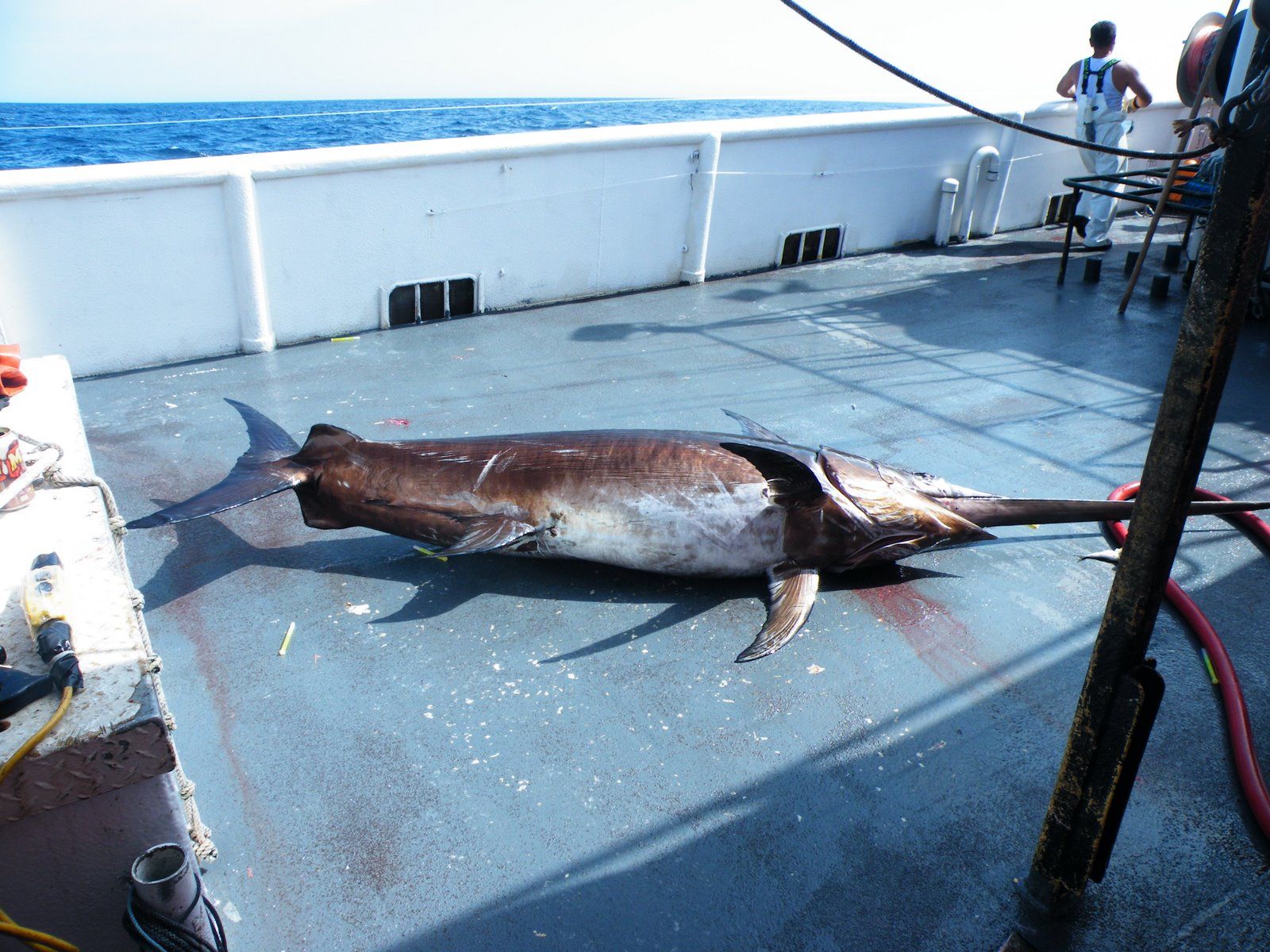One thing fishing operations large and small agree on: There are plenty of swordfish in the sea. Whether it’s a lucrative industry to be in, though, may depend on the size of your outfit.
“The U.S. swordfishery has a fairly large quota that has not been reached in the past few years,” said Jennie Lyons, a NMFS spokeswoman.
As of Aug. 31, 2018, just 33.2 percent of baseline quota had been met, with just 462.2 metric tons harvested. That’s less than last year at this time, when 555.9 metric tons had been brought ashore, and even less than in 2016, with 641.1 metric tons caught.
Still, it has been a good year so far in Cappy Cheshier’s estimation. His two swordfishing boats operate out of Hillsboro Inlet in Pompano Beach, Fla., landing plenty of 100- to 300-pound swords with buoy gear about 25 miles out. His catch has fetched anywhere from $2 to $8 a pound this year, he said.
Scott Taylor of Dayboat Seafood in Lake Park, Fla., began his business with a partner in 2006. His take on the industry isn’t so sunny. He claims that overregulation in this country and importing from other countries have made swords a difficult business, a business in which he has placed a great deal of stock with 18 longline vessels. He quoted ex-vessel prices at $3 a pound out of Miami early October.
“I can’t put crews on the boats for those prices,” he said. “When it drops below $5 a pound, I can no longer fish for those prices.”
Indeed, average price per pound so far in 2018 in Florida was $3.58, but not much different from 2017’s average $3.61 a pound and more than 2016’s average of $3.28.
Once the target of the “Give Swordfish a Break” chefs’ boycott in the late ’90s, the population of North Atlantic swordfish was rebuilt by 2006. Lyons credited this to “the engagement and innovation of U.S. fishermen.”







